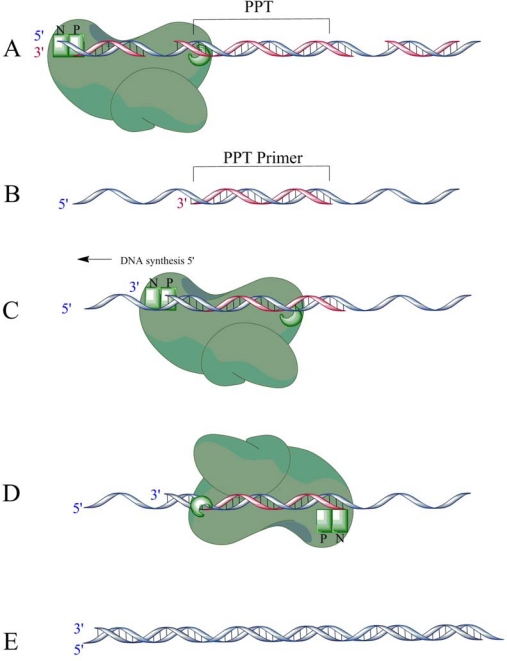Figure 6.
A During (−)-strand DNA synthesis, the PPT region of the RNA genome is resistant to RNase H cleavage, while a portion of the RNA genome is degraded concomitantly with (−)-strand DNA synthesis. Here, a specific cleavage is made to create the PPT primer. B The RNase H-resistant PPT sequence forms the primer for (+)-strand DNA synthesis when the rest of the genome is completely degraded by RNase H. C The RNA primer is extended 12 nucleotides, D then RT pauses and changes orientations to a polymerase-independent binding mode in order to cleave at the DNA:RNA junction, and remove the PPT primer. E The 12-mer fragment is extended toward the 5′ end of the (−)-strand DNA (see Figure 1F). After the second strand transfer event, the (+)-strand DNA is fully synthesized resulting in a fully double-stranded provirus. Adapted from [49].

